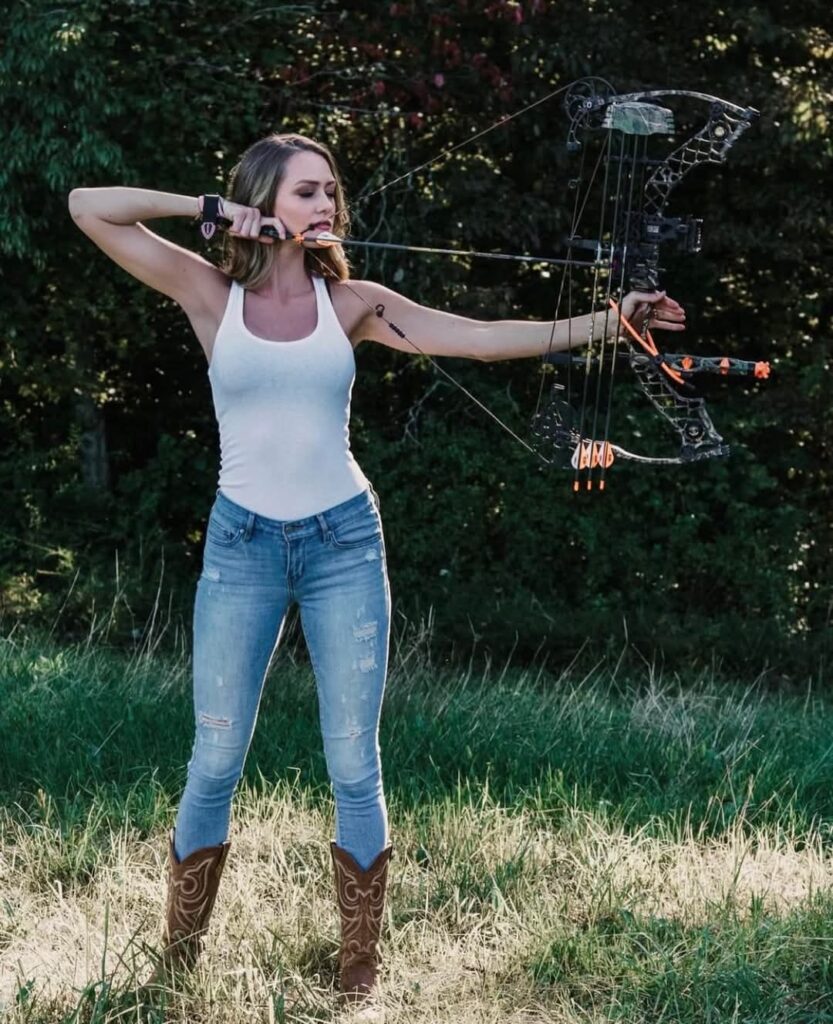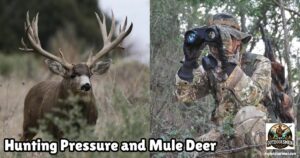Contents
- 1 Step 1: Assess Your Current Bowhunting Form
- 2 Step 2: Master Your Stance and Grip
- 3 Step 3: Refine Your Anchor Point and Aim
- 4 Step 4: Practice Controlled Breathing and Smooth Release
- 5 Step 5: Develop a Target Practice Routine
- 6 Step 6: Optimize Your Equipment and Environment
- 7 Step 7: Stay Consistent and Embrace Gradual Adjustments
- 8 Common Questions & Troubleshooting
- 9 Final Thoughts & Next Steps
Improving your bowhunting form can increase your accuracy and boost your confidence in the field. Consistent practice and close attention to detail are key to moving from a basic level to a more advanced technique.
I have spent years refining my form, and I know that small adjustments can lead to noticeable improvements. This guide outlines several steps that I believe are helpful for anyone looking to step up their bowhunting skills.
QUICK LOOK: Tips to Perfect Your Bowhunting Form
- Assess Your Current Form: Begin by taking a close look at your current technique. This self-assessment lets you pinpoint which parts of your form might be holding you back, and writing down your observations can be very helpful
- Stable Stance and Grip: A stable stance is very important in bowhunting accuracy. How you place your feet and distribute your weight plays a significant role in how precisely you can aim.
- Establish Your Anchor Point: One of the key adjustments that improved my accuracy was refining my anchor point. The anchor point is a reference mark on your face that helps you align your shot the same way every time
- Controlled Breathing: Your breathing is a critical aspect of a steady release. Taking a deliberate approach to your breathing can smooth out your release and create a rhythm that becomes second nature over time.
- Establish a Practice Routine: Regular target practice is one of the most effective ways to improve your bowhunting form. By focusing on key aspects of your form and reviewing your performance, you can easily identify areas that need improvement.
- Optimize your Equipment: Your gear and surroundings play a vital role in your overall performance. Regularly checking your bow, arrows, and even the stability of your target can make a significant difference in your accuracy.
- Make Gradual Adjustments: Progress in bowhunting is not about overhauling your entire approach overnight. Steady, incremental improvements are far more effective than dramatic changes. Instead of trying to perfect everything at once, focus on one element of your form at a time.
Step 1: Assess Your Current Bowhunting Form
Begin by taking a close look at your current technique. It is common for archers to develop habits over time that limit precision. I started by recording my sessions and reviewing my posture, grip, and release in detail.
This self-assessment lets you pinpoint which parts of your form might be holding you back, and writing down your observations can be very helpful. By clearly understanding where you are starting from, you create a solid foundation on which to build improvements.
Questions to Consider:
- Am I holding the bow with a relaxed yet firm grip?
- Is my stance balanced in a way that supports steady aiming?
- Do I consistently set my anchor point in the same spot?
- Is my release smooth and controlled?
Keeping a simple log of these answers makes it easier to track progress over time.
Step 2: Master Your Stance and Grip
A stable stance is very important in bowhunting accuracy. I learned early on that a solid position not only helps control the bow but also focuses your attention on the target. How you place your feet and distribute your weight plays a significant role in how precisely you can aim. In my experience, a measured stance goes hand in hand with a relaxed, yet secure grip.
Improving Your Stance:
- Keep your feet about shoulder-width apart to maintain balance.
- Place your lead foot slightly forward to serve as your pivot point.
- Make sure your weight is evenly distributed so you remain steady.
Fine-Tuning Your Grip:
- Hold the bow with a light, relaxed grip to avoid unnecessary tension.
- Make sure the bow remains stable when you begin your draw.
- Experiment with different grips in various environmental conditions until you find what works best for you.

Working on these fundamentals consistently will help you build a reliable base before moving on to more advanced techniques.
Step 3: Refine Your Anchor Point and Aim
One of the key adjustments that improved my accuracy was refining my anchor point. The anchor point is a reference mark on your face that helps you align your shot the same way every time. By zeroing in on a consistent point—such as the corner of your mouth or the center of your cheek—you lay the groundwork for consistent aiming. I recommend taking the time to experiment with different positions until you find one that feels both natural and repeatable.
Defining Your Anchor Point:
- Try out different spots along your face until one feels right.
- Stick with the position that you can maintain over repeated draws.
- Practice slowly drawing your bow until the string reliably reaches that mark.
With a fixed anchor in place, you can spend more time aligning your sight and less time worrying about inconsistency, which leads to improved shot placement even when under pressure.
Step 4: Practice Controlled Breathing and Smooth Release
Your breathing is a critical aspect of a steady release. I found that mastering breath control significantly reduced unwanted body movement and helped me deliver clean, precise releases. Taking a deliberate approach to your breathing can smooth out your release and create a rhythm that becomes second nature over time.
Key Breathing Techniques:
- Take a slow, deep breath before drawing your bow to ease tension.
- Exhale gradually as you prepare to release the arrow, letting your body relax naturally.
- Focus on a slow and steady release, which minimizes any abrupt movements.
With regular practice, controlling your breath leads to muscle memory that delivers consistently smooth releases, making your shots more accurate and dependable.
Step 5: Develop a Target Practice Routine
Regular target practice is one of the most effective ways to improve your bowhunting form. I set aside dedicated practice time at the range to obtain honest feedback on my technique. By focusing on key aspects of your form and reviewing your performance, you can easily identify areas that need improvement.
Effective Practice Guidelines:
- Set up your target at a challenging range to test your skills.
- Record your sessions so you can analyze your performance later.
- Concentrate on specific elements such as your stance or release with each session.
- Maintain a brief log of what adjustments you try and how they impact your accuracy.
Consistent, focused practice helps reinforce good habits while providing valuable insights into what strategies work best under different conditions.
Step 6: Optimize Your Equipment and Environment
Your gear and surroundings play a vital role in your overall performance. Before heading out, I always ensure that my equipment is in top condition and that the shooting environment is safe and predictable. Regularly checking your bow, arrows, and even the stability of your target can make a significant difference in your accuracy.
Equipment and Environment Tips:
- Inspect your bow frequently for any signs of wear or damage and ensure everything is well-tuned.
- Practice with equipment that matches the conditions in which you intend to hunt, whether in cold weather or high humidity.
- Choose a practice area with minimal distractions and ample natural lighting to mimic real hunting conditions.
- Make sure your target is set up on a steady surface to prevent any movement during your shot.
By taking these simple steps, you remove a host of unpredictable variables, allowing you to concentrate solely on your technique and form.
Step 7: Stay Consistent and Embrace Gradual Adjustments
Progress in bowhunting is not about overhauling your entire approach overnight. Over the years, I have learned that steady, incremental improvements are far more effective than dramatic changes. Instead of trying to perfect everything at once, focus on one element of your form at a time.
Keep a brief record of what you change and note how each adjustment affects your performance. This methodical approach ensures that you build on your successes and quickly identify techniques that need fine-tuning.
Adaptability, combined with regular review of your performance, is very important for long-term success. Remember that every archer’s routine is unique, and even slight modifications can eventually lead to big improvements in accuracy.
Common Questions & Troubleshooting
What if my accuracy does not improve even with practice?
There are times when it might seem that nothing is working. I have found that reviewing videos of my sessions can help spot minor issues that were previously overlooked. If you remain stuck, consider asking a more experienced bowhunter for advice. Try focusing on one small element at a time rather than attempting to refine your entire form all at once.
How can I reduce injuries and fatigue during long practice sessions?
Warming up properly and stretching before practice can drastically reduce the risk of fatigue and injury. I make it a point to start my session with a gentle warm-up and keep short, regular breaks throughout. Staying well-hydrated and mindful of your posture are simple yet very important measures that help prevent discomfort during extended practice.
What should I do if I feel my release is inconsistent?
If your release varies from shot to shot, slow down your practice. Concentrate on your breathing technique and consider practicing without an arrow to strengthen your muscle memory. Additionally, recording your sessions can help you compare different releases and understand which adjustments yield the best results.
Final Thoughts & Next Steps
Perfecting your bowhunting form takes commitment, patience, and consistent effort. The steps outlined above are the result of countless hours spent on the range, testing what works best and making small, deliberate adjustments along the way.
By paying attention to your stance, grip, anchor point, and release while also maintaining a steady practice routine, you can see your accuracy improve significantly over time.
Your Action Plan:
- Begin with an honest self-assessment of your current form and note any habits that may be hindering your performance.
- Focus on one adjustment at a time—whether it is refining your stance, perfecting your grip, or establishing a consistent anchor point.
- Integrate controlled breathing and practice a smooth, deliberate release during your training sessions.
- Set aside regular time for target practice and equipment checks to ensure that everything is in top condition.
- Monitor your progress over time, remain open to small adjustments, and steadily build on your successes.
This systematic approach not only makes improvements manageable but also gives you clear benchmarks for measuring success. Over time, these small changes add up, increasing your confidence and consistency in the field.
What is one small adjustment you will make in your routine tomorrow? Take the time to experiment, record your progress, and enjoy the ride as your bowhunting skills reach new levels of precision.
Check Out Our Latest Articles:
- Bow Hunting For Mule Deer

- Best Public Land Mule Deer Hunting

- Drone-Based Scouting Services For Mule Deer

- Late Season Mule Deer Hunting Tips

- 8 Tips for Dealing with Hunting Pressure While Mule Deer Hunting

- TideWe Portable Hunting Blinds

As always, stay safe, enjoy the journey and please try to leave it cleaner than you found it. If you have any comments, questions, ideas, or suggestions please leave them in the comment section below and I’ll get back to you ASAP. You can follow us on YouTube: Man Art Creations for videos of our DIY Adventures.
P.S. – Thanks so much for checking out our blog we really appreciate it. Just so you know, we may receive a commission if you click on some of the links that appear on our site. This helps us keep our content free and up-to-date for everyone. We appreciate your support!



